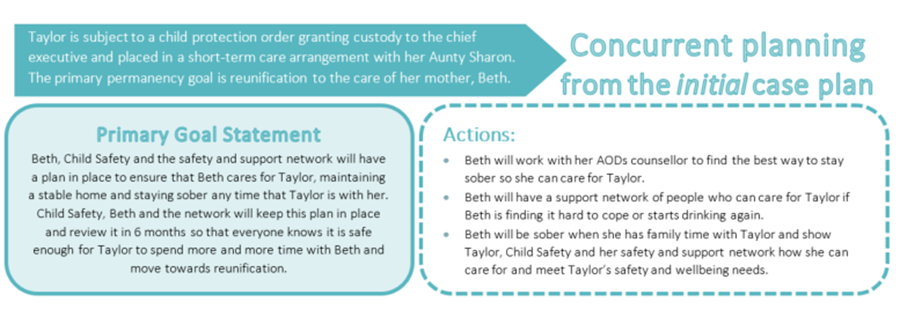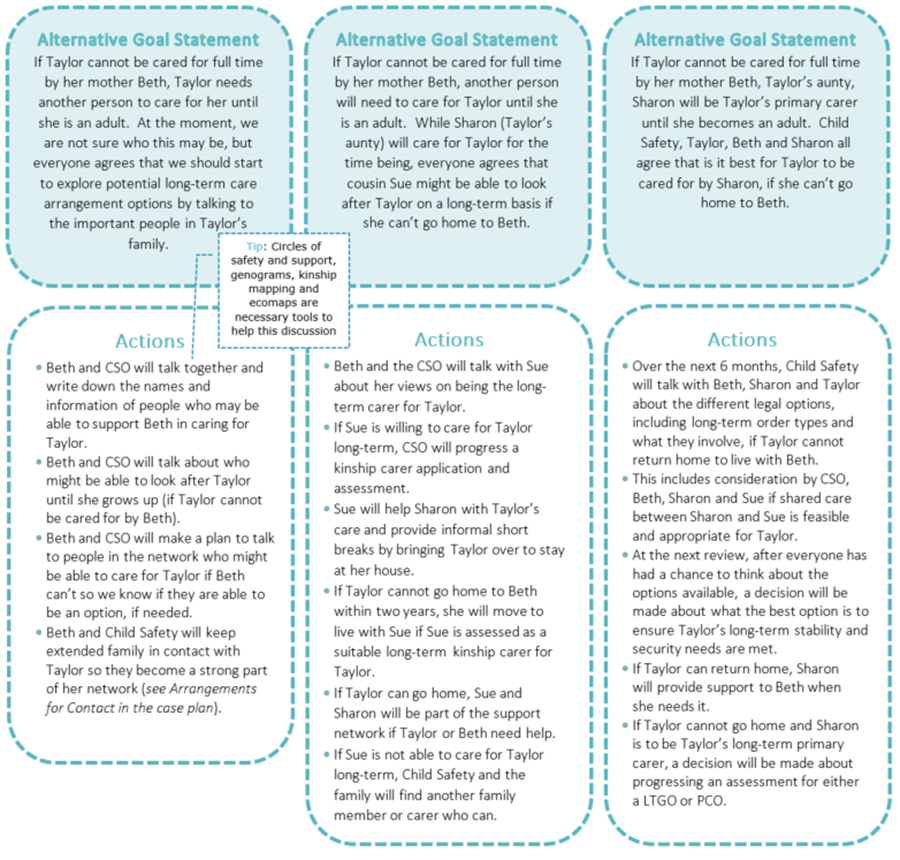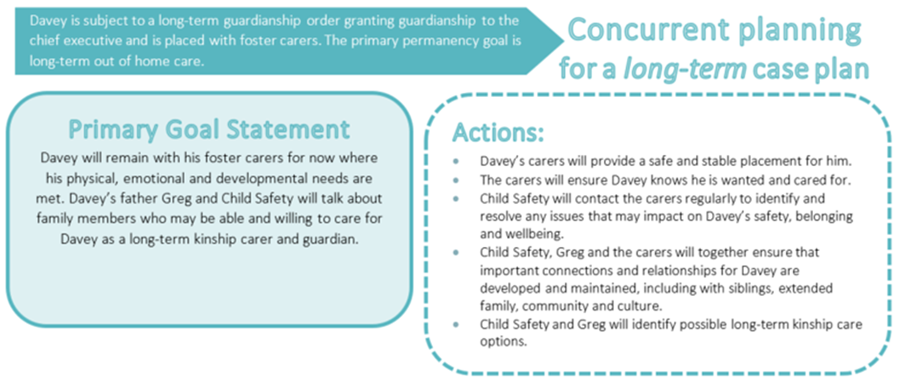Tip
Young people may wish to write a letter or speak at Court, where a younger child may be able to complete a tool such as The Three Houses Tool or speak with a professional such as a Separate Representative.
Goals
Concurrent planning is most visible within the goals of the case plan. Goal statements reflect a vision for future safety, belonging and wellbeing and provide the focus and direction for the creation of detailed plans. Ensure the development of permanency goals is inclusive and the family understands the purpose behind articulating primary and alternative goals.
As with other goals stated within the case plan, permanency goals must be SMART – specific, measurable, attainable, results oriented and time limited:
Specific—the family and safety and support network know exactly what has to be done.
Measurable—goals are measurable, clear and understandable, so everyone knows when they have been achieved. For concurrent planning, this is an important signpost for when alternative permanency goals need to be pursued.
Achievable—is the family able to accomplish the goal in a designated time period given their available resources? It is important the family contribute to developing alternative permanency goals, so they know what will happen if goals are not able to be achieved.
Realistic—the family has had input into and agreed on the development of feasible goals. Circumstances can change, and the long-term stability of the child must remain the priority. A realistic concurrent plan can support timely, transparent decision making.
Time-limited—time frames for goal accomplishment are determined based on understanding the family's risks, strengths, ability and motivation to change, and availability of resources. This is a key consideration when planning for permanency.
De Panfilis (2006)
Permanency goals must prioritise the child’s long-term needs for safety and stability. Include the views and wishes of the child, parents and family network when making decisions about care arrangements for the child and their long-term protection needs. Case planning, including the development of a concurrent plan, is enhanced through collaborative practice.
Examples of concurrent case plan goals
The figures below provide some examples of goals and actions for concurrent case planning from the initial case plan. The examples include goals where a long-term alternative care arrangement (physical permanency) is not yet known, where a kinship option has been identified but not confirmed and an example where the alternative care arrangement has been decided and agreed.
The actions include who is involved, what they will be doing and (if relevant) and when the action will be completed or reviewed.
Further reading


At each review of the case plan, the alternative goal for best achieving permanency is also reviewed and updated. The following figure extends on the earlier examples, providing examples of how each goal will change as it progresses.

If a child is subject to a long-term guardianship order and is under the guardianship of the chief executive, case planning should be focussed on how to build, maintain and enhance relational, physical and legal permanency. Determine whether the care arrangement is the most stable, permanent arrangement and preferred legal permanency option for the child. Consider the child’s age and think about what long-term care will look like. Are there family members who would be willing to care for the child? Does the child have any other siblings in care and across different placements? Goal statements may look like this:

An alternative goal for strengthening permanency might be:

If, following kinship mapping, Davey’s paternal grandparents are identified and assessed as suitable kinship carers, the alternative goal could change to:

Integrating concurrent planning into the case planning process
NextImplement a concurrent plan
Published on:
Last reviewed:
-
Date:
Maintenance
-
Date:
Page created


